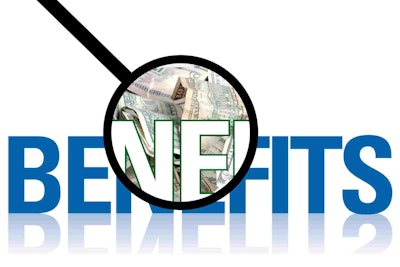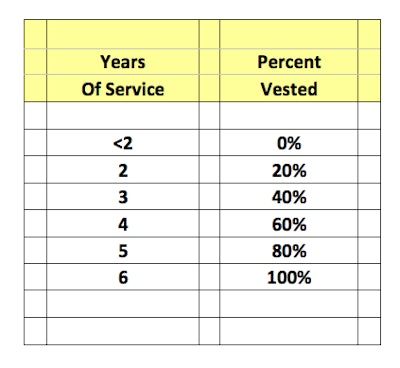

- Current income tax deduction for plan contributions.
- Tax deferred growth on plan assets.
- Asset protection under ERISA.
- The ability to roll your account, income tax free, to your IRA.
There are, I’ve found, many misconceptions about “qualified plans.” Known as “qualified” because contributions qualify for a current income tax deduction, these plans may be your best tax planning tool.
Qualified plans come in two general styles, defined contribution (DC) and defined benefit (DB). Defined contribution plans are your 401(k)’s, SEP’s, etc. You define the contribution that is made to the plan. The maximum contribution changes each year the IRS evaluates and releases updated 401(k) Plan Contribution Limits. What’s unknown is what you will receive in the future. It depends on how much is put in each year, how many years monies are contributed, what it earns on investments, etc. Whatever that works out to, that is what is available in the future.
However, the traditional plan is the defined benefit plan. Think back to our parent’s generation (or grandparent’s). They went to work for a company for 30 years and retired on, let’s say, 75 percent of their salary. That company’s plan defined the benefit that was paid at retirement.
At one time, defined benefit plans were the cornerstone of one’s retirement. Lately, they have fallen out of favor after taking on negative connotations due to the financial crisis. Why the negativity? Articles in the press about the “underfunded” or “unfunded” liabilities in DB plan. However, these articles are generally about large companies such as those listed on the stock exchanges. The articles about problem plans are almost always about DB plans sponsored by a state or county government or a large company listed on the stock exchange. Most of the larger companies have stopped their DB plan and replaced it with a DC plan. That’s nothing new.
However, the DB plan remains a fantastic program for the closely held business and professional practice. How can that be? Because the small business is run by focused and driven individuals. The DB plans set up for this sector are not about employee benefits or “retirement” as much as they are about the income tax deduction, the tax deferred growth, the asset protection under ERISA (the Employee Retirement Income Security Act of 1974) and the fact they are approved, in writing, by Internal Revenue (Favorable Determination Letter).
For these entrepreneurs, DB plans can be an ideal vehicle, allowing you to keep a larger share of your hard earned dollars.

Here are some examples: “A plan will cost too much to administer,” “My employee costs will kill me.” “I’m already paying salary, sick pay, vacation pay, matching Social Security and Medicare, paying into workman’s comp, unemployment…don’t want to add more overhead.” “My employees don’t or won’t appreciate it.”
All of that is nonsense. A custom designed DB plan can provide substantial tax benefits to the business or professional practice owner without any of the above.
For those generating more than $200,000 a year in taxable income, consider setting up a pension plan – even if you already have existing “retirement” investments, such as a 401(k), IRA or the like. In fact, many clients that come to us already have an existing plan. “The plan is OK, it’s just that the deductible contribution is not enough. I need a larger annual tax deduction.” This situation is when the DB plan makes sense. And you can add on a DB plan in addition to any existing 401(k) plan.
Is this your situation? Then, the following are a few of the key benefits that DB plans have to offer:
Higher annual contribution limits – Like a 401(k) plan, an IRA, etc., DB plan contributions are income tax deductible on the business’s or professional practice’s tax return. Key difference is the higher tax-deductible contribution limits allowed in DB plans.
As mentioned above, a DB plan can create substantial annual tax deductible contributions over and above existing 401(k) plans. The maximum deductible contribution is around $200,000. Keep in mind that is the maximum. One can do anything less than that. The point? I’ve never had a client ask for a DB plan to be designed to provide a specific benefit. Hey, we’d all like to retire on $1,000,000 per month, right? Do we have the resources to set aside to get there? The answer is we all have a budget. It is that budget that drives the DB plan’s contribution. In other words, a client will say “I’d like an additional deduction over and above my 401(k) plan of $X dollars.” We design the plan that absorbs that annual contribution.
Asset protection – Under ERISA pension benefits are “inalienable and non-assignable.” In other words, you cannot be alienated from your pension monies. This has been tried all the way to the Supreme Court in Patterson v Schumate. Not even up for discussion. Think about it this way. How did O.J. run around leading a decent lifestyle when Ron Goldman’s father had a judgment against him? O.J.’s NFL pension was a protected asset.
For anyone with a successful and profitable business, it’s not if you will be sued but when. In today’s litigious society frivolous lawsuits are commonplace. Pension monies are one asset these judgment creditors cannot take away.

Let’s say an employee leaves after three years. They are 40-percent vested. They forfeit, or leave behind, 60 percent of their benefit’s value. Those forfeited assets stay in the plan.
One caveat: Vesting accelerates to 100 percent on death, retirement or plan termination.
Tax deferred growth – All assets in a qualified plan are tax exempt. Under ERISA pension monies have to be held “in trust” for the participating employees. The trust is a tax exempt trust, so no taxes are due on plan earnings. But let’s be clear, taxes are due on these monies when you take them out of the plan. However, in many circumstances the taxable receipt of funds and therefore taxes can be delayed up to age 70 ½ when you must begin taking RMD’s, or Required Minimum Distributions.
With all of the above benefits, what is the downside? Nothing is the “silver bullet.” Here are some items to consider: A DB plan, like a 401(k), etc. has annual reporting requirements, actuarial certification, etc. The cost for a DB plan is typically about twice what a 401(k) plan costs. Unlike a 401(k) or any other DC plan, defined benefit plans have required contributions. DB plans are not set up for a one-time contribution. When establishing the plan, consider this is an item that will be added to overhead. OK, the fact that you, the business owner, gets the bulk of the contribution is great. So it’s not really a “cost” in that sense. However, it is something that has to be done annually.
The moral of the story? For the high-net worth, high taxable income business or professional practice owners wanting to take steps to minimize income taxes, protect assets and personal wealth from judgment creditors, all with up-front approval from Internal Revenue in the form of a Favorable Determination Letter, a defined benefit plan may likely address all these objectives.
Don’t assume anything. Don’t go into a plan blind. Obtain an illustration of a DB plan custom designed for your particular situation. Get your CPA involved in the decision making process too. When making a business decision, go in with all the facts and see the numbers in black and white. You will likely be pleasantly surprised.










